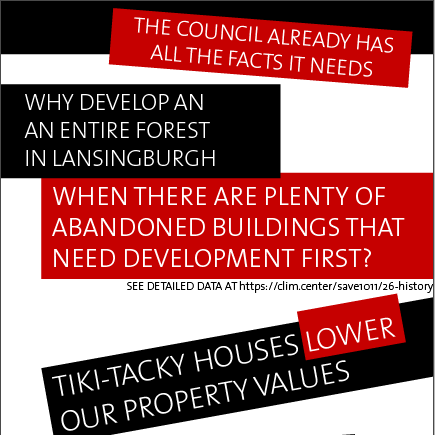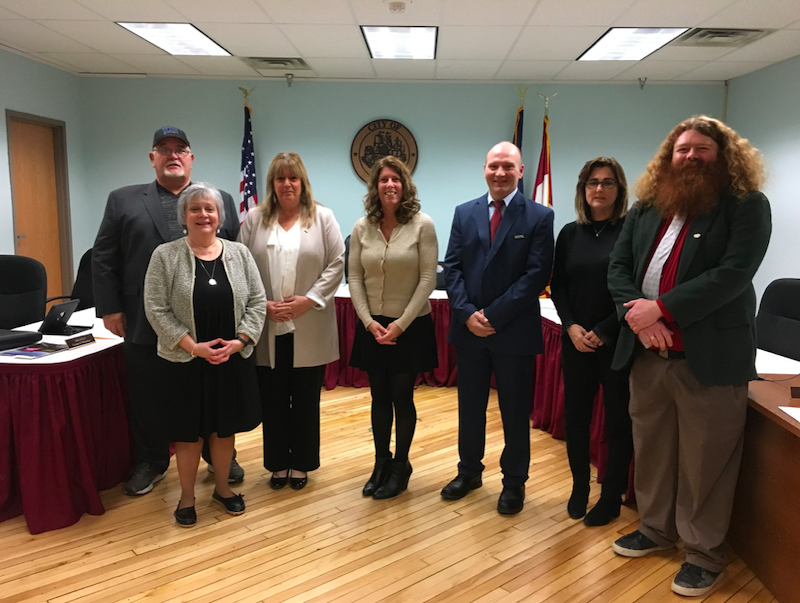Neighborhood Impacts
The development will hurt Lansingburhg and the entire city. It will impact the neighborhood and the city overall negatively.
The development will destroy the current access to the Hudson River provided with this land. The proposed development claims to incorporate the public interested in access to the waterfront and natural spaces along the river. However, this statement is clearly misleading. The developer is creating a dead-end trail and does not create any incentive or attractive park or other features that would invite the public.
The developer is clearly creating amenities for his renters, not for the public and the Lansignburgh neighborhood — and will additionally use this as justification for higher rental prices for departments — with negative effects for surrounding homeowners and renters.
Overall, the proposed development discourages in its design the use of this property, as it is not designed as public use space.
HEIGHTENED INFRASTRUCTURE AND PUBLIC SERVICE COSTS
The residents of 240 newly built apartments will significantly increase pressures on public services and infrastructure.
The proposed development will significantly increase the infrastructure and public service costs, particularly in this R1-zoned residential area. It will in particular negatively impact the local community in terms of infrastructure and public service availability. Several studies have consistently shown the associated increased costs of and strain on critical services associated with developments such as the one proposed here (see evidence for Section 4). Abrupt development growth that does not follow smart and soft growth guidelines and do not utilize existing infrastructure and e.g. vacant properties or buildings, significantly strains services through rapid influx, including amongst others:
-
- Increased pressure on already strained school services
- Increased pressure on already strained garbage collection
- Increased pressure on already strained emergency services
- Increased need for road maintenance
- Increased pressure on already over-capacity sewage system
LOSS IN PROPERTY VALUE, RESALE VALUE AND RENTAL INCREASES
Besides the cost associated with strains on the local infrastructure, this development will also lead to additional direct and indirect costs for the local residents and the overall neighborhood.
The development will lead to significant loss of property value and resale value due to the loss of greenspace and waterfront, which also negatively impacts the city budget
-
- The tax savings of industrial development may measure a few hundred dollars a year per taxpayer, but the loss in property values measures in the thousands. Typically it takes decades of tax savings to make up for the loss in property value.
- Property value will decline with the loss of a significant greenspace and undeveloped waterfront forest property
Rental increases in surrounding housing are expected to increase due to the amenities at the property, clearly designed for the use of renters at the property.
VACANT PROPERTIES AND LACK OF DEVELOPMENT IN LANSINGBURGH
There are priority development areas in the direct vicinity of this property. A vacant price chopper as well as several vacant locations across the local Lansingburgh neighborhood are identified as priority and development nodes in the comprehensive plan.
As the plan states:
“Troy’s high vacancy rates are also contributing to neighborhood destabilization. There are approximately 23,100 housing units in Troy and approximately 2,100 of these units, or 9%, are vacant and unused. Prospective residents are deterred from purchasing homes in neighborhoods with high vacancy rates as they are perceived as areas with higher crime, and where continued disinvestment may occur. These conditions have resulted in a weak housing market and low housing values compared to the region”.
A rezoning discourages and actively prevents the development of already developed vacant areas with existing infrastructure and public services in place.
The development of this property, and the associated rezoning, stand in conflict with these development needs and undermine soft and smart growth and development.
Accordingly, the rezoning would stand in direct conflict with the provisions and priorities laid out in the Comprehensive Plan, the smart growth development principles established in the Comprehensive Plan, and the New York State Smart Growth Criteria.




